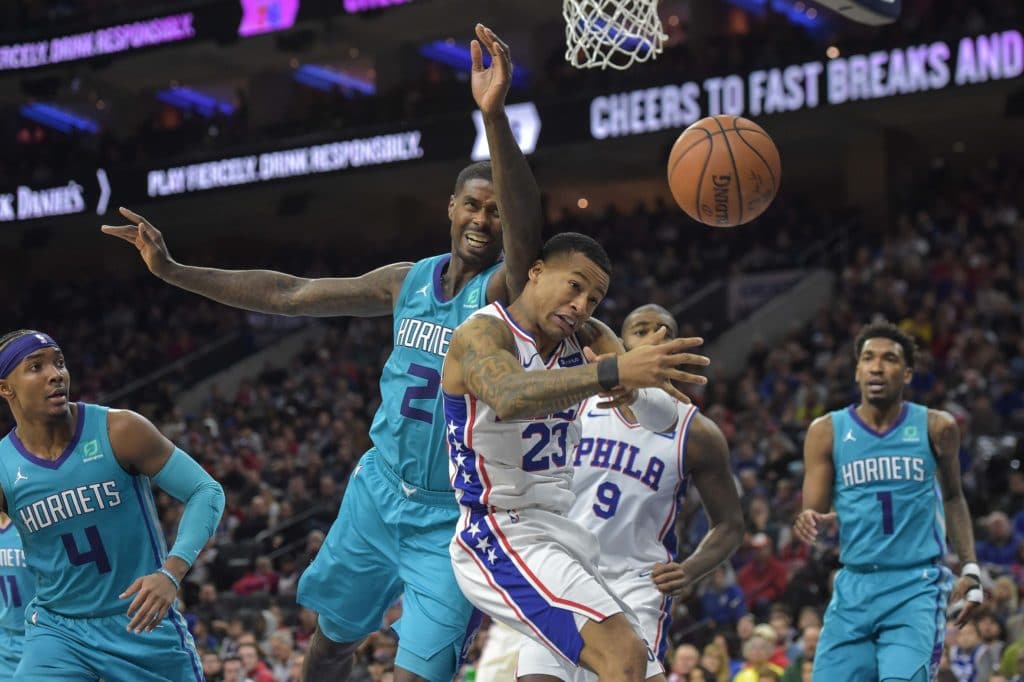Ad Disclosure
The Sixers are the NBA’s Worst Turnover Team: Will They Fix the Problem, Or Continue to Paper Over the Cracks?

Is nine games a small sample size?
Maybe, but that equates to about 11% of the NBA calendar, which should give us enough material to work with when evaluating the new-look 76ers, who snapped a three-game losing streak Sunday night with a fairly pedestrian win against an inferior team.
One of the storylines surrounding this nascent squad is the same thing we’ve talked about for years now, which is turnovers. The Sixers are currently the worst turnover team in the NBA, coughing it up 18.8 times per game. That’s up significantly from the 14.9 number they posted last year, which was an improvement over 16.5 average from the 2017-2018 season. It’s one step forward, two steps backward.
Of course, context is important. The Sixers are also the NBA’s 4th best assist team right now while throwing the 5th most passes per game (303), so common knowledge would tell you that trying more passes increases the amount of times you might fail to connect with a teammate. There’s always been some truth to that with Brett Brown’s players, but the disappointing thing this year is a combination of extra sloppiness in that area and unnecessary dead ball turnovers.
As an exercise, I put together a reel of all 20 turnovers from last night’s game. Give it a watch:

Let’s go down the list, identify each play, and then see what we can learn:
- Tobias Harris can’t catch pass, ball out of bounds
- Harris traveling
- Cody Zeller swipe, Josh Richardson charged with a turnover after collecting his own rebound
- Harris bad outlet pass
- Al Horford stripped
- Joel Embiid stripped from behind (while trying to make a mid-court heave)
- Trey Burke bad pass
- Harris traveling (shuffled the feet)
- Kyle O’Quinn bad pass
- O’Quinn bad pass/Raul Neto can’t collect
- Neto stripped
- Embiid bad pass, throws ball away
- Neto bad pass
- offensive foul
- Richardson bad pass
- Harris bad pass
- Mike Scott bad pass
- Matisse Thybulle bad pass
- Thybulle tough pass, Jonah Bolden loses ball out of bounds
- Thybulle double dribble
You see a lot of “bad pass” written in there, but there’s also a variety of stuff that just turns the problem into a snowball effect, with sloppy traveling violations, untimely offensive fouls, and a lack of urgency that sometimes manifests itself in opponent swipes and steals. You typically see the latter problem with Joel Embiid in the post.
It’s important to note that while the Sixers are the worst turnover team in the league, they’re only 21st in ‘opponent points off turnover,’ which is 19 per game right now. That means two things; one, they’re doing a decent job of getting back on live ball turnovers, and, two, there’s a disparity in the live ball/dead ball ratio.
If we go through the list above, we find:
- nine live ball turnovers:
- 11 dead ball turnovers:
Almost a 50/50 split there. A good number of those bad passes found their way out of play, which resulted in a whistle and opportunity to reset defensively. This is something worth watching as the season continues, to see how bad passes are being punished by the other team.
Over the past few years the Sixers have been able to mask the problem by excelling in other areas, namely defense and rebounding. This year, Brett’s team is #12 in offensive rebounding and tied for first in steals, which is how they make up for the lost possessions. As such, the Sixers have been holding opponents to a league-low of 82.9 field goal attempts while trying 88.7 of their own, which negates the turnover problem without actually fixing it.
Question is if the Sixers can change that or not. Do they put the turnover issue on the back burner again this year? Or do they take steps to actually address the issue?
Said Brett Brown last night:
“This is what I tell the team; until we can fix this, this is a house built on sand. It is fool’s gold, and we have to find a discipline and a better way to control that.
We can’t fool ourselves, this is a problem, players know it, understand it, but we’ve got to fix it.”
We’ll see if they can fix it, or if they continue to succeed by ignoring the problem and simply papering over the cracks.
Kevin has been writing about Philadelphia sports since 2009. He spent seven years in the CBS 3 sports department and started with the Union during the team's 2010 inaugural season. He went to the academic powerhouses of Boyertown High School and West Virginia University. email - k.kinkead@sportradar.com